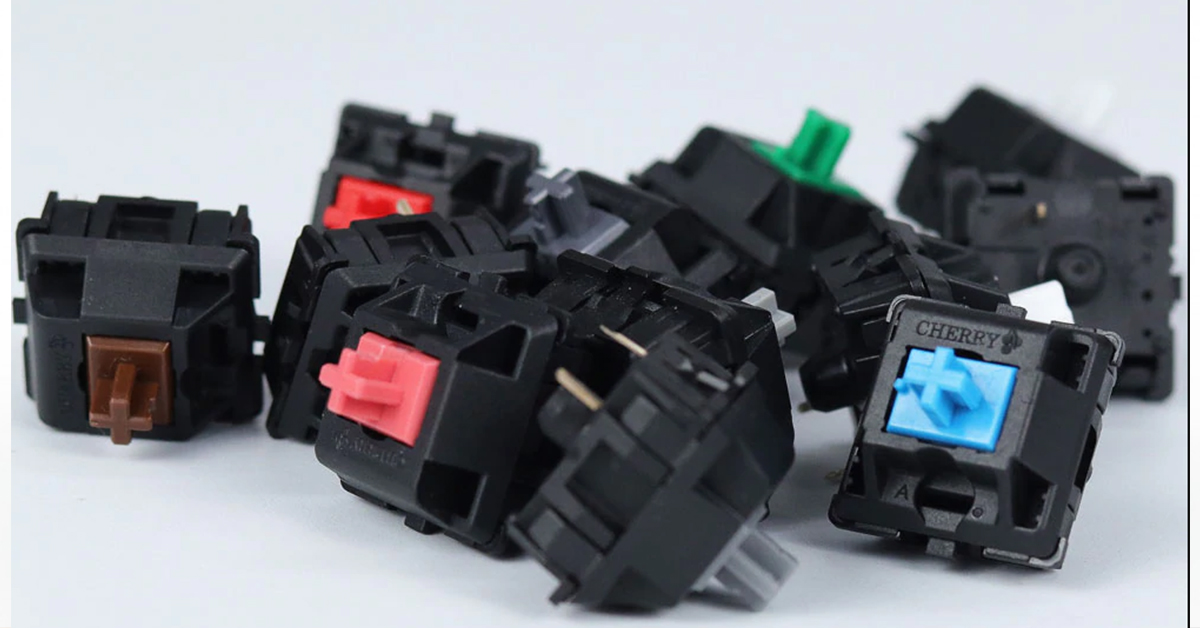

I like the feel of the pump and the clicky sound, even though I do many typing. I Personally like cherry MX blue switches that are clicky. Some people might find that like nails on a chalkboard.

Some people will find that incredibly annoying for typing. The third type is clicky, which is pretty much like tactile, except there’s even more of a bump and there’s a clicky sound. with the benefit of not having a clicky sound like the clicky type Clicky Switches This gives the confidence that you are pressing the right key that you want with no accidental key presses. There’s like a little bump before it registers. Using tactile, you can feel a little bump before it actually registers on the computer. That’s what I got with the MX Cherry Browns. If you wanted to do typing and gaming and get the best of both worlds, I would go with tactile. So if you want to use your keyboard just for gaming, then go linear. I used it for gaming, and then I tried to do some typing, and I just had so many mistakes. So I got a linear key switch-type keyboard. When you’re typing, you don’t want to, like I accidentally kind of brush on it or something and then get many mistakes. They want to press the button and see the immediate response. A lot of Gamers usually use this type of key switch because they want quick reaction time. You press a key, and you don’t feel the actual actuation point where the key registers. Linear is just straight down a key goes straight down. And by the end of this article, you should know which one is right for you. We’ll go over the difference in their sound and feel. In this article, we will be learning about different mechanical switch types in more detail. If you wish to learn more about the difference of each switch type, then you have come to the right place. Clicky switches are the loudest of the three switches. Both tactile and clicky switches have a tactile bump while a linear switch is fast and smooth. The main difference between the three is the sound and feel. There are three main switch types: linear switches, tactile switches, and clicky switches. This is because there are different kinds of switches available in the market. Greens are ideal for typists who prefer stronger tactile feedback and an audible click.The best thing about mechanical keyboards is that you can choose or customize the feel of the switches. Green: These switches are clicky in nature, with the heaviest actuation force of 80g.Blacks are fast and quiet, making them ideal for gaming. Black: These switches are linear in nature, similar to red, but with a higher actuation force.Blues have a medium actuation force and are ideal for typing, but they're also one of the loudest. Blue: These switches are tactile and clicky in nature and provide an audible click and a tactile bump when the key is pressed.Browns have a low to medium actuation force and are fast and quiet, making them ideal for both typing and gaming. Brown: These switches are tactile in nature and provide a soft bump when the key is pressed.Reds have a low actuation force and are fast and quiet, making them ideal for gaming. Red: These switches are linear in nature and provide a smooth typing experience with no tactile bump.In conclusion, the differences between tactile, linear, and clicky switches are largely a matter of these factors, and understanding them is the key to choosing the right switch type for you.īelow I mentioned a collection of the most common mechanical switch colors and their characteristics:

Linear switches are generally the quietest, while clicky and tactile switches are the loudest.


 0 kommentar(er)
0 kommentar(er)
